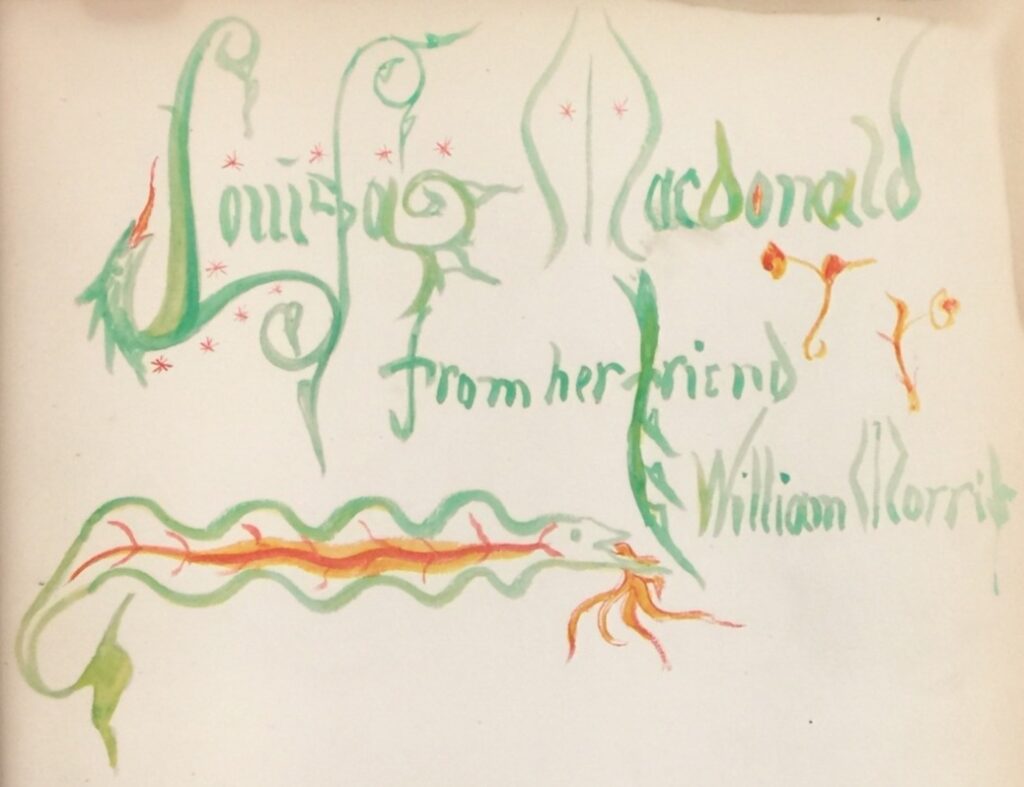Posted on September 23, 2025
of william morris, julio cortázar, and dragons


for the past year I’ve been reading Fiona MacCarthy‘s biography of William Morris (a low and slow reading, if you will) and now, through a gradual accumulation of coincidences, my head is full of dragons.
the first dragons to catch my eye were Morris’s topiary sculptures from Kelmscott manor, almost too delightful to miss:
“Morris personalized his yew hedge with a topiary dragon. He named it Fafnir, after Sigurd’s dragon. In later years there was a periodic dragon-trimming ceremony when Morris would set about Fafnir with large shears.”
Around the same time, his indignation at the criticisms of his Sigurd poem by Dante Gabriel Rossetti are all the more charming (though, given context, it remains to be seen which brother he truly felt was the fool):
“William Rossetti, the literary man and civil servant, he found pedestrian beyond belief. When Gabriel objected to Morris’s Sigurd story, saying he could not take an interest in a hero whose brother was a dragon, Morris responded grandly that a dragon for a brother was preferable to a bloody fool.”
These two passages brought back to mind a much, much earlier section of the book – a throwaway passage, almost – where the author mentions a gift that Morris made to Louisa Macdonald, younger sister of Georgiana Macdonald Burne-Jones:
“…He had also given Louisa two volumes of Froissart’s Chronicles and H. N. Humphrey’s Illuminated Illustrations of Froissart which he inscribed ‘Louisa Macdonald from her friend William Morris’ and decorated with his own drawing of a dragon.”
So of course… I needed to see this dragon. and as luck would have it, there exist in the universe other people who also needed to see him, too! which is how I stumbled on The Library of William Morris, a website dedicated to reconstructing a catalogue of the books and manuscripts that Morris is known to have owned (in many cases, with provenance for whereabouts of the actual copies themselves). in no small miracle for me in my quest, they do in fact have an entry for the Illuminated illustrations of Froissart that he gifted, but even better – a photograph of the illuminated inscription. and best of all? MacCarthy undersold the dragon – there’s actually two (possibly three, if you fancy the F in ‘friend’ to be a faded fellow compatriot):


I also recently finished reading Carol Dunlop and Julio Cortázar’s Autonauts of the Cosmoroute, an account of the couple’s quixotic, month-long journey along the liminal non-places of the autoroute from paris to marseille, never straying further than its rest stops. they managed this with the aid of their VW camper van – who, coincidentally, was named Fafner.
“…two years ago as I saw him arriving for the first time, coming up the Rue Cambronne in Paris, fresh from the factory, with his wide red face, low-set sparkling eyes, and a likeable, unruly air, something in me went click and he became the dragon, and not just any old dragon but Fafner, guardian of the treasure of the Nibelungen, who according to legend and Wagner had been evil and stupid, but always aroused a sneaking sympathy in me, if only for being doomed to die at the hand of Siegfried, as I can never forgive heroes for doing that kind of thing, just as thirty years ago I couldn’t forgive Theseus for having killed the Minotaur. I have only just now made the connection between these two things … it seems obvious I followed the same instinct to defend those the established order regards as monsters and exterminates as soon as it can. In two or three hours I made friends with the dragon. I told him that as far as I was concerned his name was no longer Volkswagen … and on our way home he demonstrated his delight by jumping up on the sidewalk to the particular fright of a housewife laden with groceries.”
MacCarthy notes that Morris notoriously disliked Wagner’s take on the Nibelung, describing it as “nothing short of a desecration” – given that he was particularly enraged at the opera’s depiction of the dragon Fafnir – and, considering his own poetry, topiaries and fiercely defended dragon brothers – Morris may well have agreed with Cortázar on the ‘sneaking sympathy’ front.
but in another way, these two subjects resonate for me – in a later passage in the book (that I still find quite overwhelming to read), Cortázar simultaneously describes how he came to seek out his own Fafner, while eulogizing his friend, the poet Paul Blackburn:
“I would have liked to send him these lines and say: You see, when you left you didn’t know you’d illuminated me, that I’d go back to Paris and at one of the worst moments of my life thanks to you I’d do the exact opposite of what any right-thinking person would do, in other words … I went to find myself a dragon, taking advantage of a totally unexpected cheque that arrived from some foolish editor, I went to find a red dragon, I named him Fafner as a real and red dragon must be named…
…and so, in a way, the conditions piled up so that one day, so many years later, when la Osita [Dunlop] also came to know and love Fafner … when the two of us decided that a forest was worthless if it wasn’t a forest with Fafner in its most secret corner, and that beaches are a heap of sand and water if Fafner isn’t there to organize them, give them their meaning and their true lines of escape, at that time the idea of the expedition was born after a long battle with the demons … I’ll just remember how you, Paul Blackburn, already so close to that departure that still strikes me as impossible, a mere delay in the correspondence that we’ll soon catch up on, how you taught me that trips need to be poems and for that one needs a dragon“





